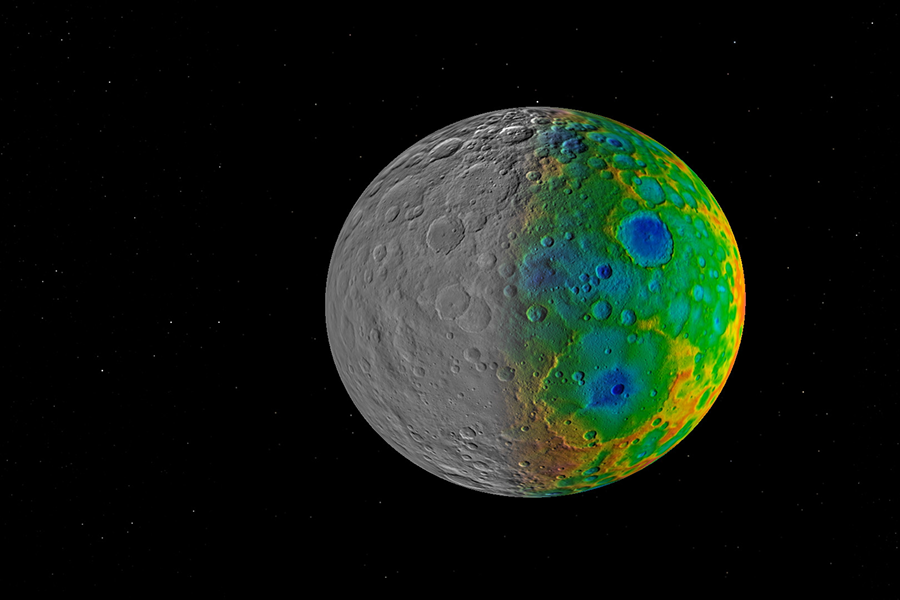The cosmic mystery of Ceres' vanishing craters
Loading...
Space can be a volatile place – that’s why so many planets we find are covered in craters.
But craters don’t usually just disappear.
Ceres is a 4.5-billion-year-old dwarf planet that inhabits an asteroid belt between Mars and Jupiter. Naturally, astronomers assumed the planet would be covered in large impact craters. But when NASA’s Dawn spacecraft finally arrived there, it found a surprisingly smooth surface.
New computer models, published Tuesday in the journal Nature Communications, confirm previous assumptions: Ceres should look like Swiss cheese by now. So what happened to all the craters?
Researchers ran computer simulations to better understand Ceres’s planetary landscape. Given the planet’s size, age, and location, it should have at least 40 craters that are more than 62 miles across. Of those, 10 and 15 should be more than 250 miles wide.
But according to Dawn images, Ceres only has 16 craters that are more than 62 miles across. And not a single one is more than 250 miles wide. Most nearby asteroids, such as Vesta, are noticeably more porous than the dwarf planet.
“Even Vesta, only about half of Ceres' size, has two big basins at its south pole. But at Ceres, all we saw was the Kerwan Basin, just 177 miles in diameter,” co-author David Williams, director of Arizona State University’s planetary studies program, said in a statement. “That was a big red flag that something had happened to Ceres.”
Could Ceres have avoided major collisions for 4.5 billion years? Probably not. It’s much more likely that some kind of geological activity has cleared them away, researchers say.
Dawn didn’t find many true craters on Ceres, it did, however, find three 500-mile wide depressions. These depressions, also known as planitiae, could be very old impact basins that have been covered by more recent craters.
Astronomers have also found evidence of ice on the dwarf planet. The upward flow of frozen brine from below the planet’s surface could very slowly smooth out craters. And cryovolcanoes, which erupt in molten ice, could cover up impact sites.
“It is as though Ceres cures its own large impact scars and regenerates new surfaces, over and over,” lead author Simone Marchi, a scientist at Southwest Research Institute's Space Science and Engineering Division, said in a statement.
Luckily, researchers will have more time to solve the mystery of the vanishing craters of Ceres: NASA announced that it would extend Dawn’s mission on the planet through 2019.







